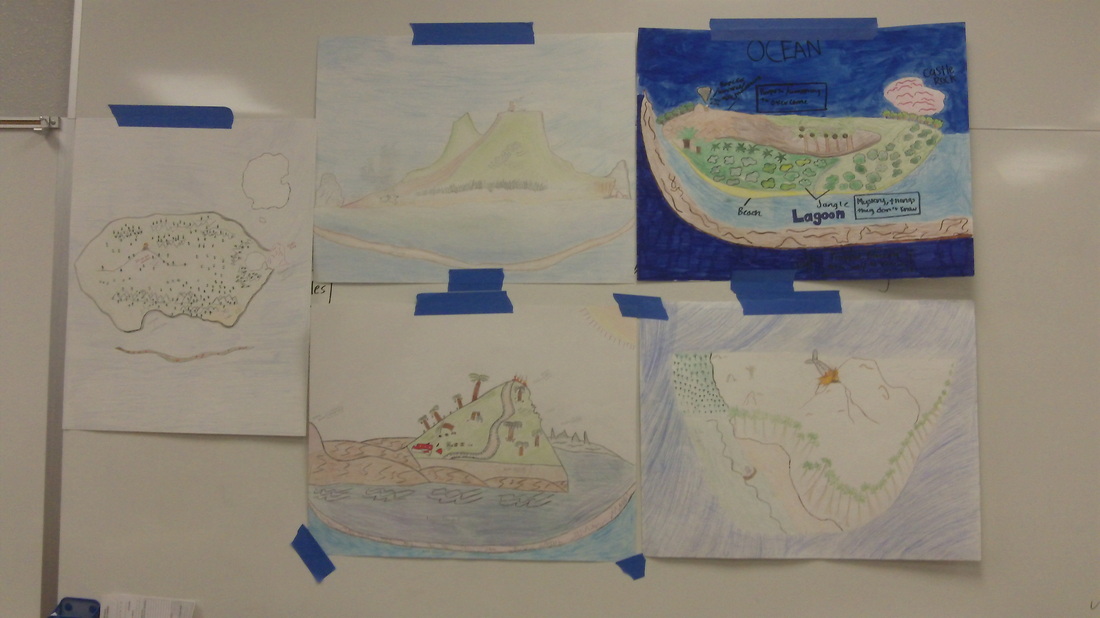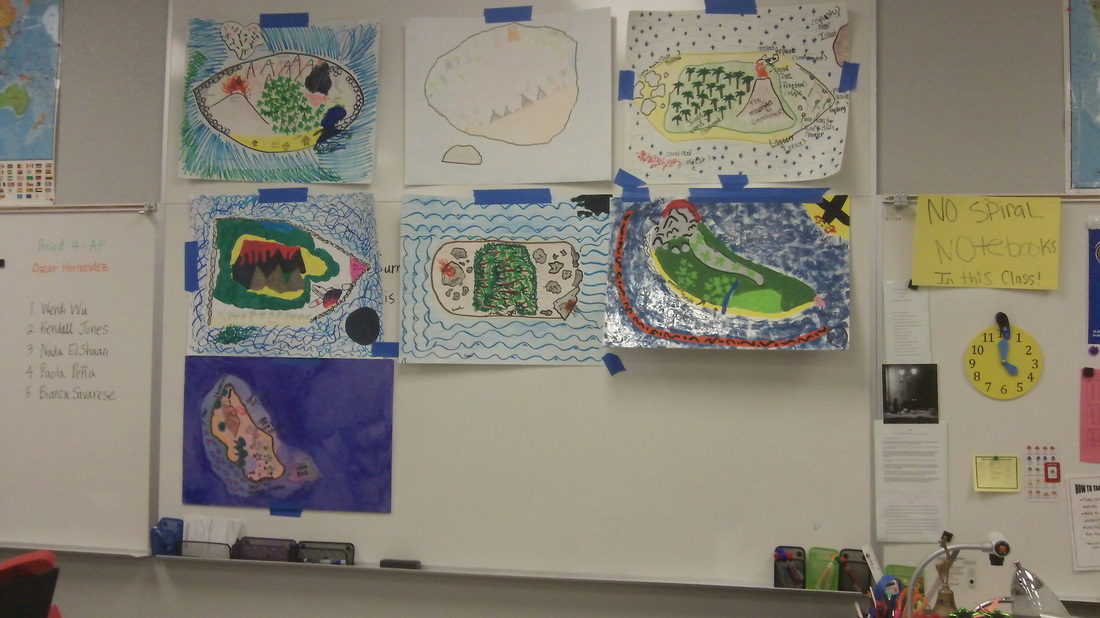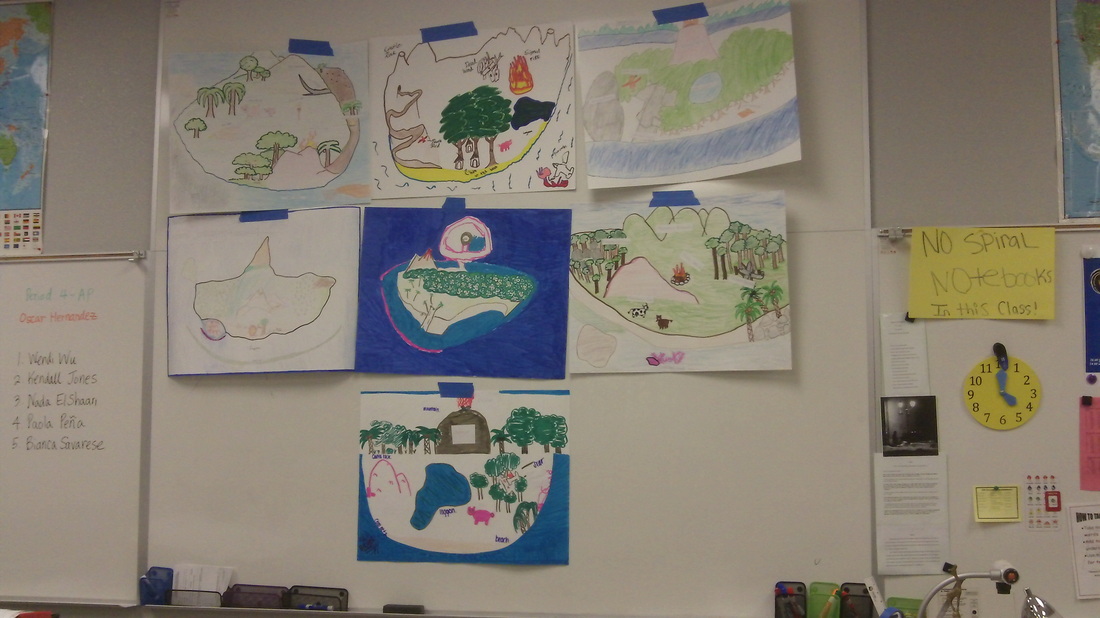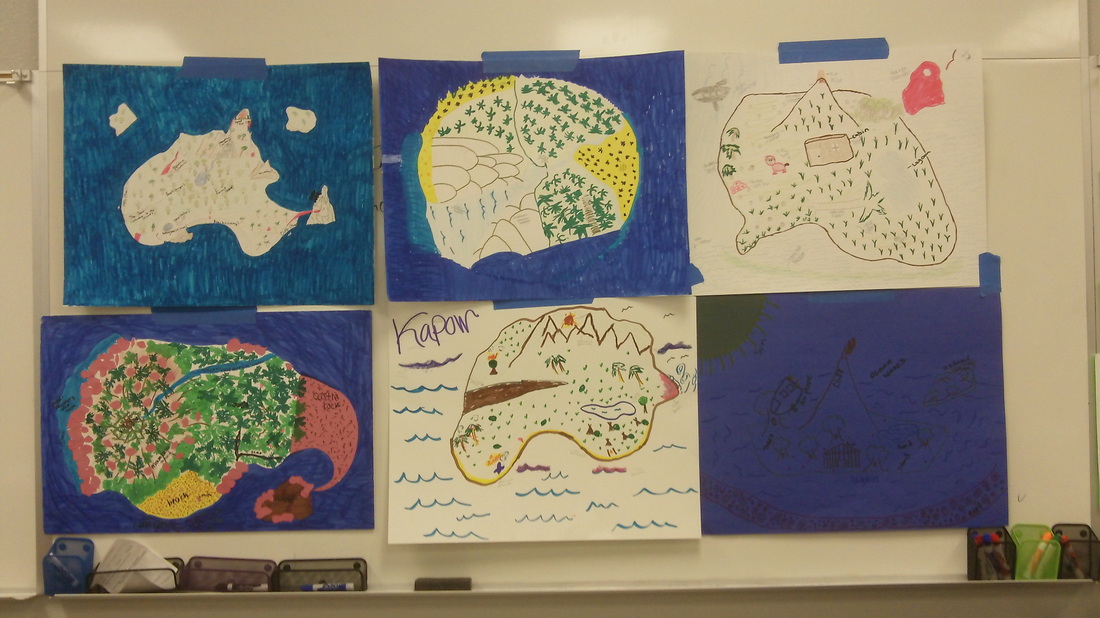|
To teach my 10th grade college prep students how an author uses ambiguity and confusion to enhance the meaning of the work as a whole, I tried the following lesson. And it worked!
I had all my students read the description of the island in Lord of the Flies Chapter 1. My students were put into groups of 6, and they were asked to create a map of the island as a group. As I expected, every map looked so very different from one another even though they read exactly the same passage. So I asked my students why that was. I asked, "If you know that the author is totally capable of creating the most accurate descriptions of the island, why didn't he do it?" After nearly 10 minutes of questioning, one of my students finally answered, "Is it because he wants us to be confused just like the boys on the island?" So I pressed it a bit more, "That's interesting. So let's say that is the case, why do you think the author wants us to be confused? Doesn't he want us to get exactly what he is saying?" Finally, one student said, "Unless confusion is what he is trying to communicate." So I kept asking, "Why would an author want to convey confusion to the readers?" Eventually, one of my students said, "Because he wants to tell us that we live in a confusing society when we don't have rules." Oh, the sound of learning in my classroom! How sweet it is! I couldn't have been happier with how this lesson turned out. I think they are beginning to get that literary devices are used to convey a bigger meaning of the work. I am so very proud of all of my students who worked so hard to get this lesson!
0 Comments
|
AuthorI am a mother, wife, and English teacher. I moved from Korean when I was 23 without speaking English. Now I teach English. I want to be an Educational-Neuroscientist when I grow up! Archives
March 2013
Categories |




 RSS Feed
RSS Feed